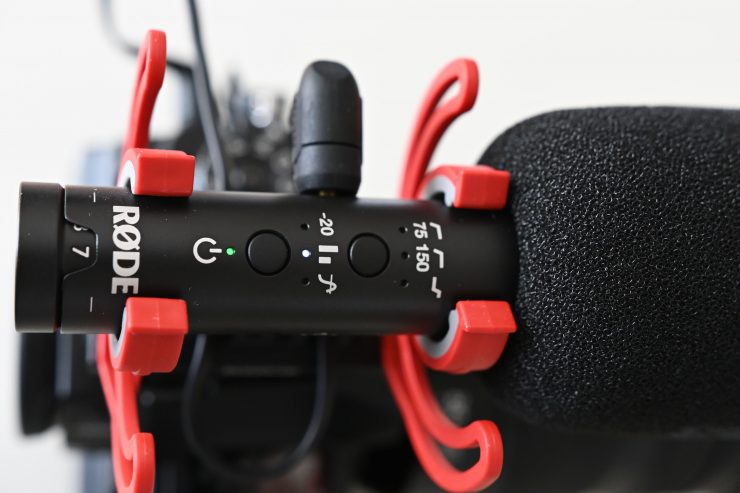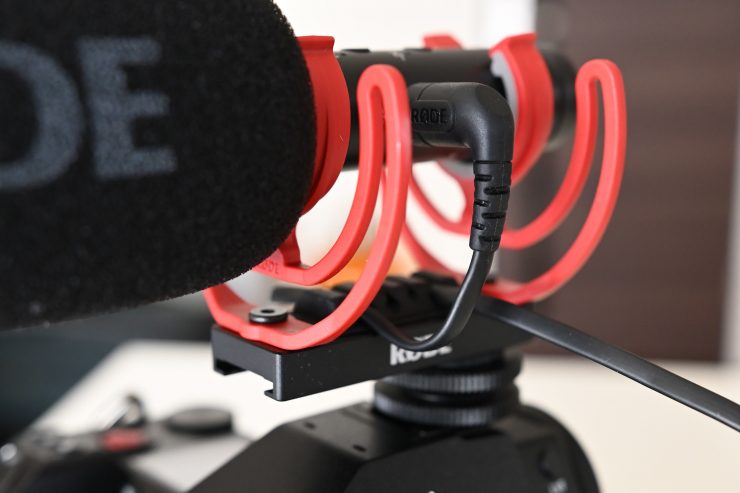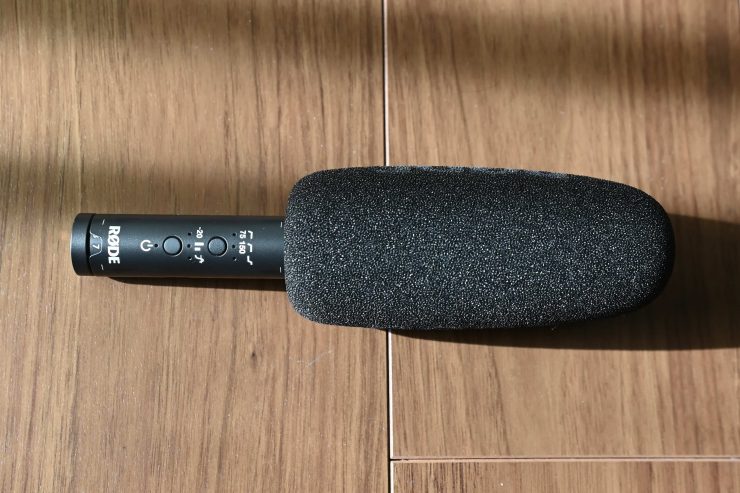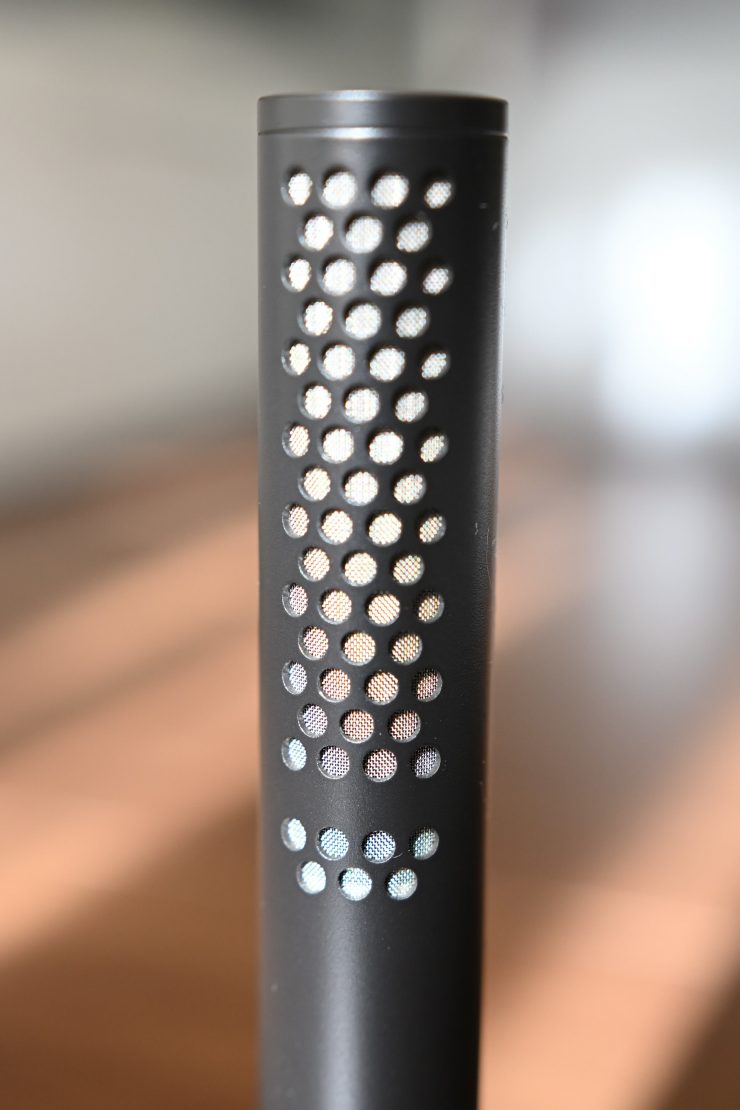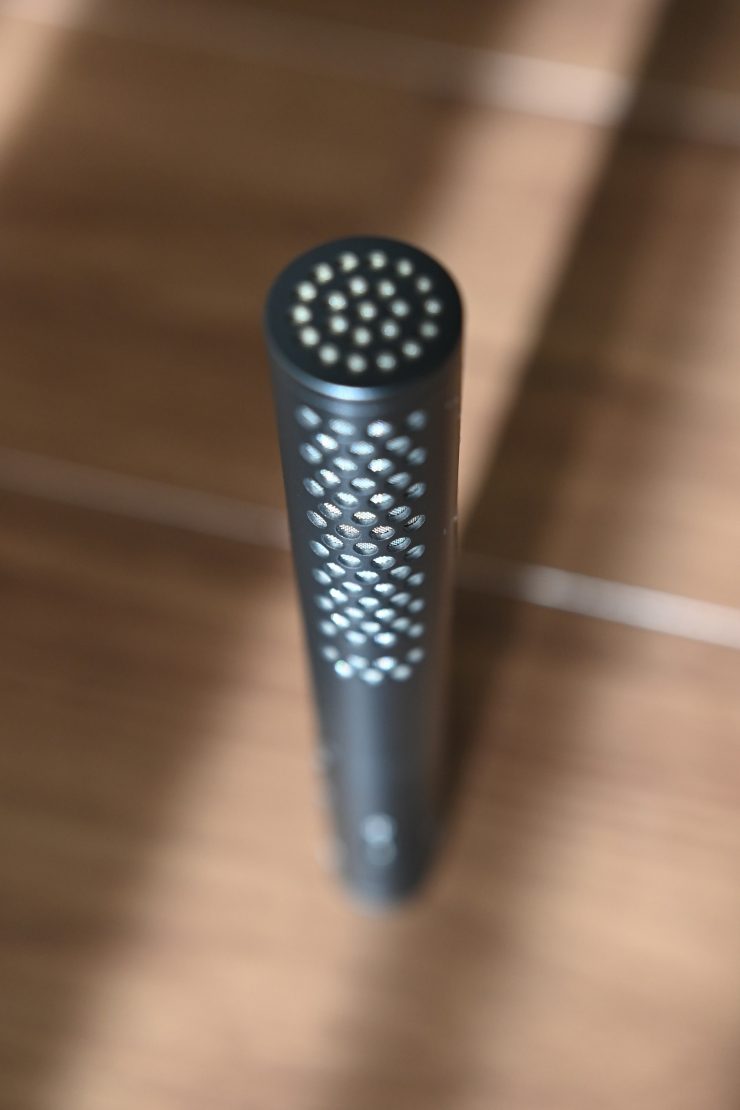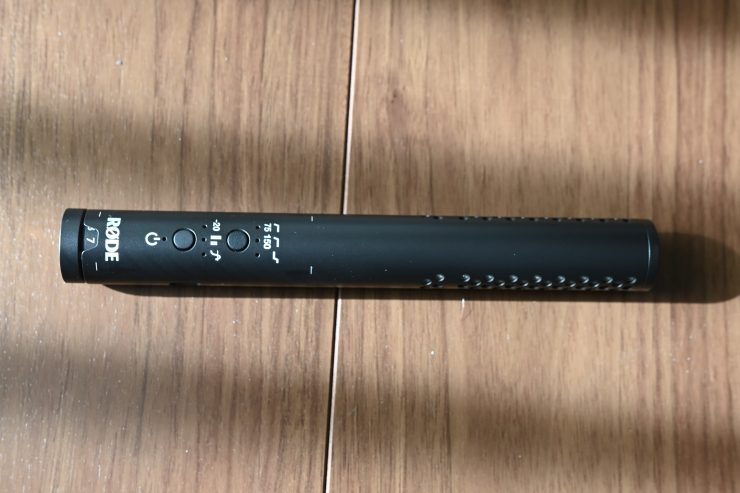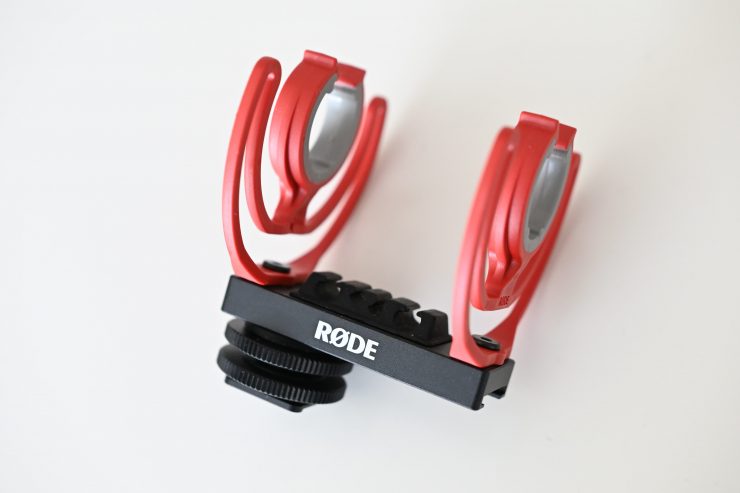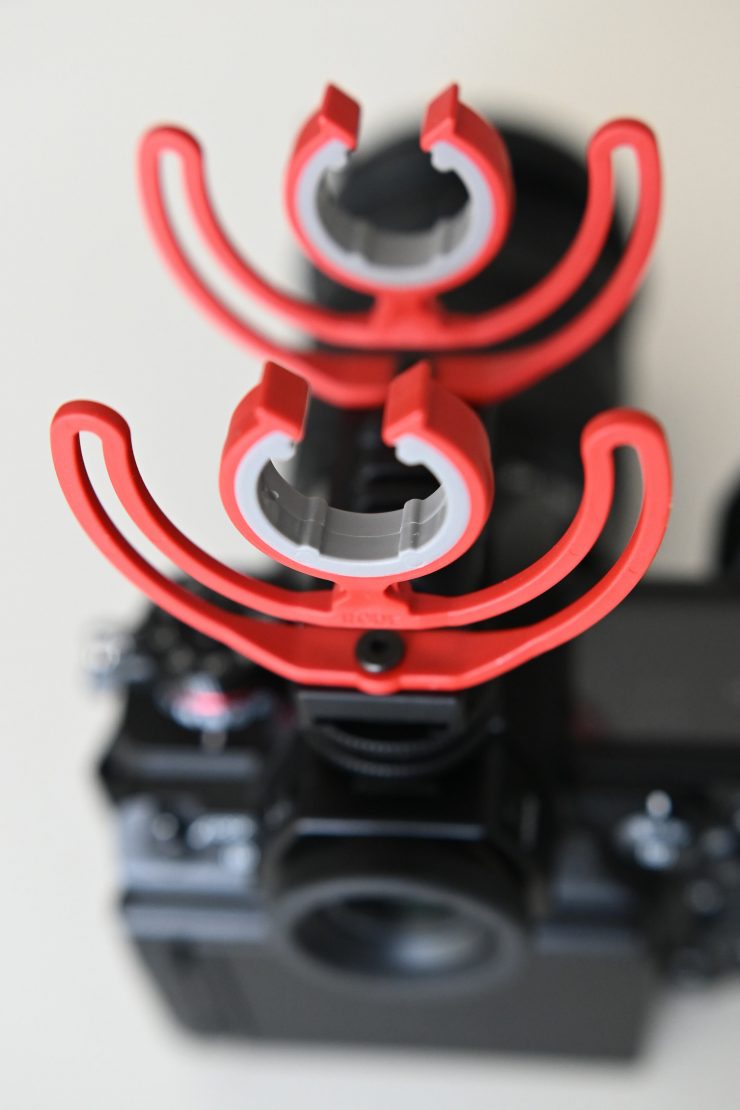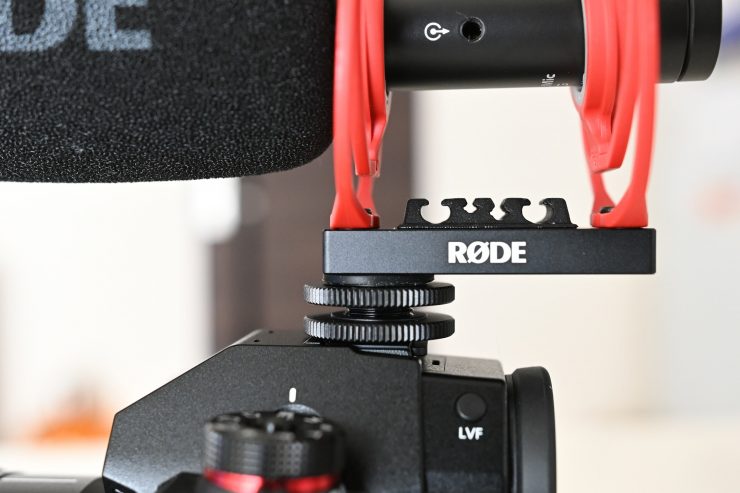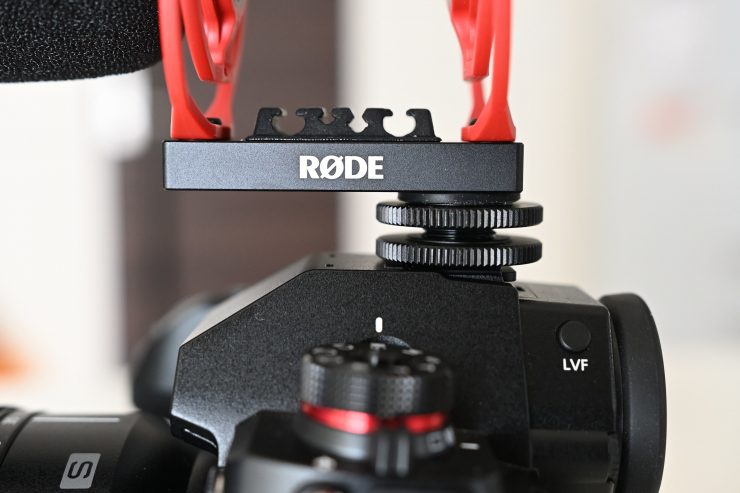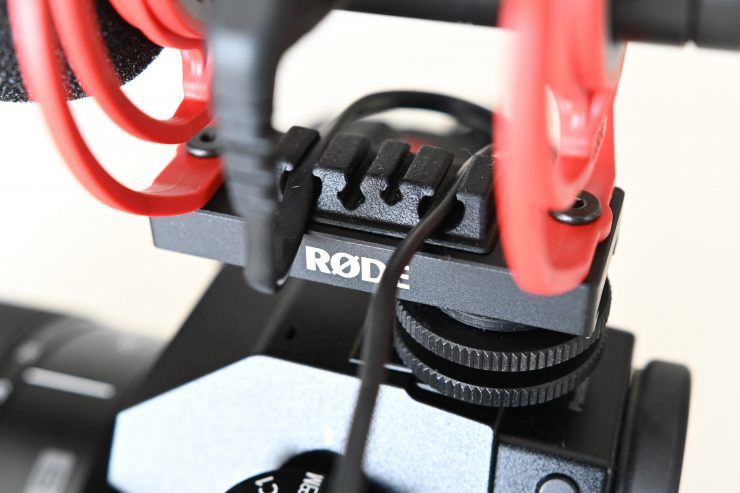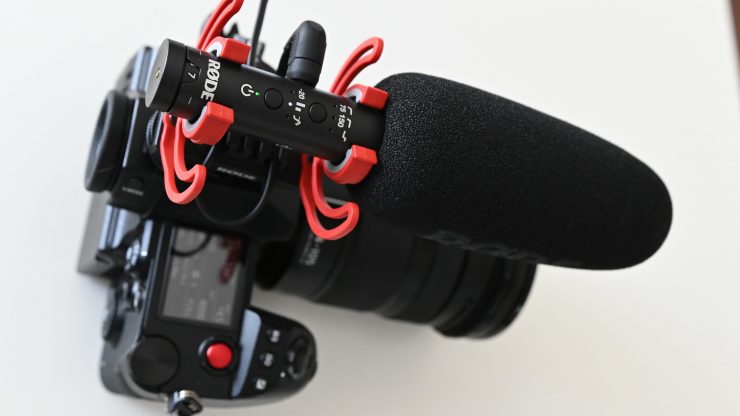
The RØDE VideoMic NTG is the Australian audio company’s latest offering. With direct competition now coming from companies such as Deity and Azden, RØDE has come up with a do-it-all mic that can be used on-camera with DLSRs/smartphones, as a boom mic, or as a USB mic for recording voiceovers, podcasts, live streaming, etc.
Swiss Army Knife of microphones
In a nutshell, the new RØDE VideoMic NTG is a hybrid on-camera VideoMic/NTG shotgun mic with a pretty impressive feature set. As I just mentioned it can be used for a variety of applications, and that is probably its strongest selling point.
In the last few years, we have seen manufacturers start to make products that are multi versatile and can be used for a wide range of applications. Consumers are getting smarter, and with so much competition it has become harder to sell products that just do one thing.
Key features
- Infinitely variable gain control (mic level to headphone level)
- Auto-sensing output that intelligently switches between TRS and TRRS
- USB output with headphone out (turning it into a fully-featured desktop USB mic)
- Digital switching for high-pass filter, pad, safety channel, auto-power function, HF boost
- dB peak warning light
- Rechargeable li-ion battery (charged via USB Type-C)
- All the usual features of the VideoMics: very lightweight, rugged, Rycote Lyre shock mounting
First Impressions
The first thing that struck me was that the VideoMic NNTG felt a lot more solidly made and robust than previous iterations of the VideoMic. The Rycote Lyre Shock system is nice and solid and the settings and buttons are all clearly laid out and marked. In this regard, it feels more closely aligned with an NTG than a VideoMic.
Design
It features the same new acoustic design as the high-end NTG5 that RØDE just released. Just like the NTG5 it also features a very lightweight design and tips the scales at 94g (3.3oz). This low weight makes it a good companion for smaller sized cameras.
Pick Up Pattern, Frequency Response & Gain
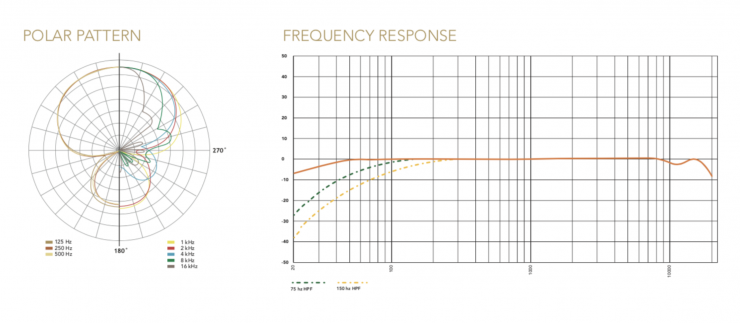
RØDE claims that the VideoMic NTG has very low self-noise, flat freq response, very directional – everything you’d want from a great shotgun mic.
The new mic has a highly directional super-cardioid polar pattern and a unique infinitely variable gain control, that allows the user to precisely adjust the mic’s output, from mic level to line level to headphone level. This active control is claimed to provide a greater output range than any other microphone on the market, allowing the mic to deliver anything from mic level signal all the way to a headphone level output.
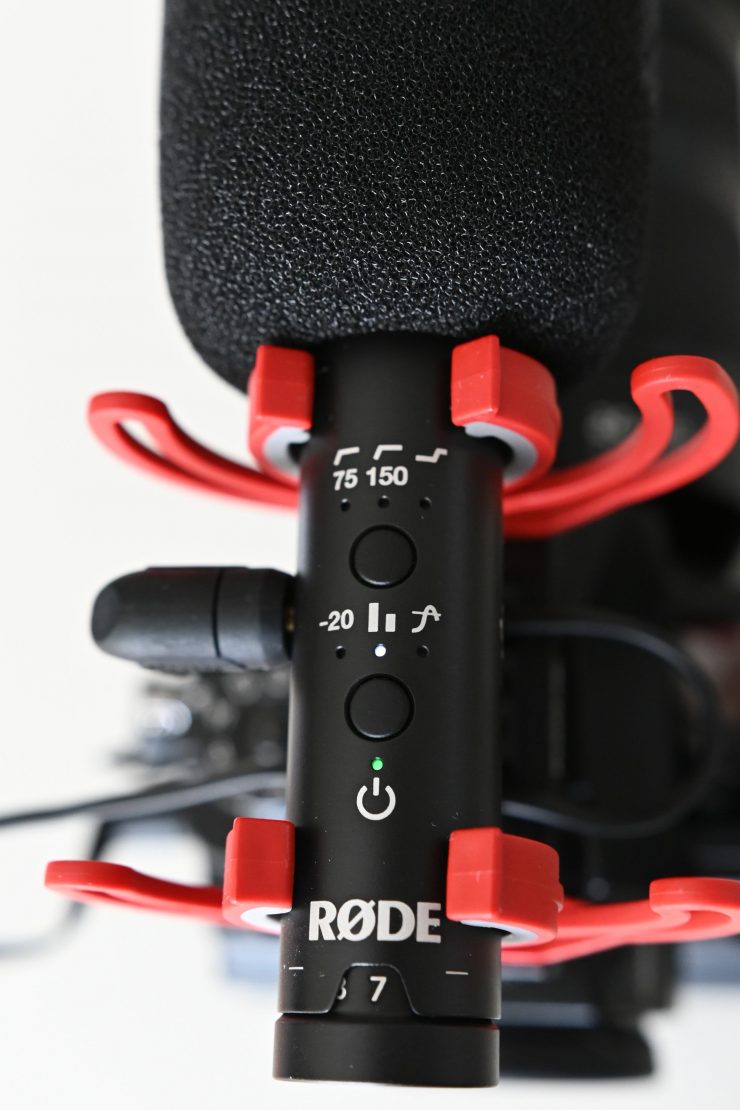
This gain control is much better and a lot more intuitive and easy to use than the system on previous VideoMic microphones.
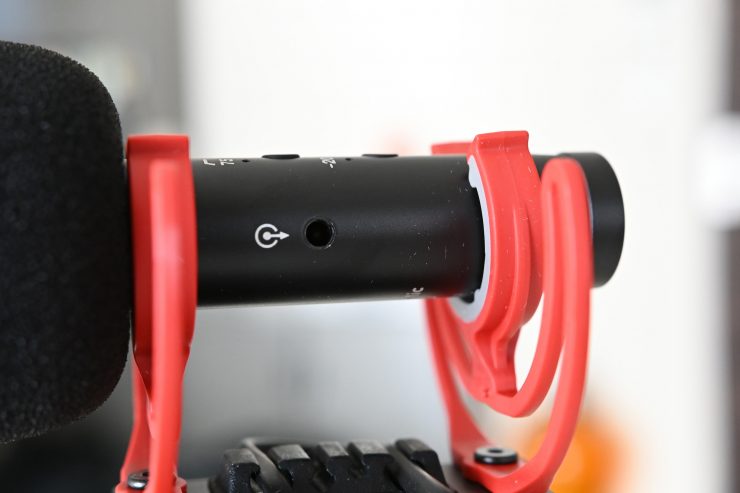
There is an Auto-sensing 3.5mm output that automatically switches between TRS and TRRS to accommodate both cameras (TRS) and mobile devices (TRRS), which saves you from having to use any adaptor cables.
USB-C output
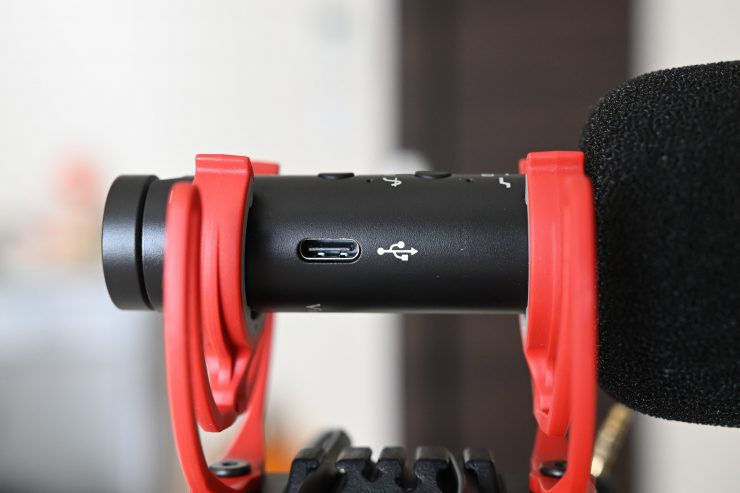
The USB-C output lets the VideoMic NTG become a fully-featured USB microphone that can record directly to a computer, tablet, or smartphone.
It also has a headphone output for audio monitoring while using the USB output. The USB-C output also doubles as a charger.
I like that you can just plug the microphone directly into a computer or smart device and record quality audio.
This is very handy if you need to record a voice-over out in the field straight to a mobile device, or even if you want to use the microphone for podcasting, or Skype/Facetime conversations.
What is also great is that if you are using the USB-C output you can use the 3.5mm input as a headphone jack so you can monitor the audio. The gain adjustment then becomes the headphone volume control.
Safety Track
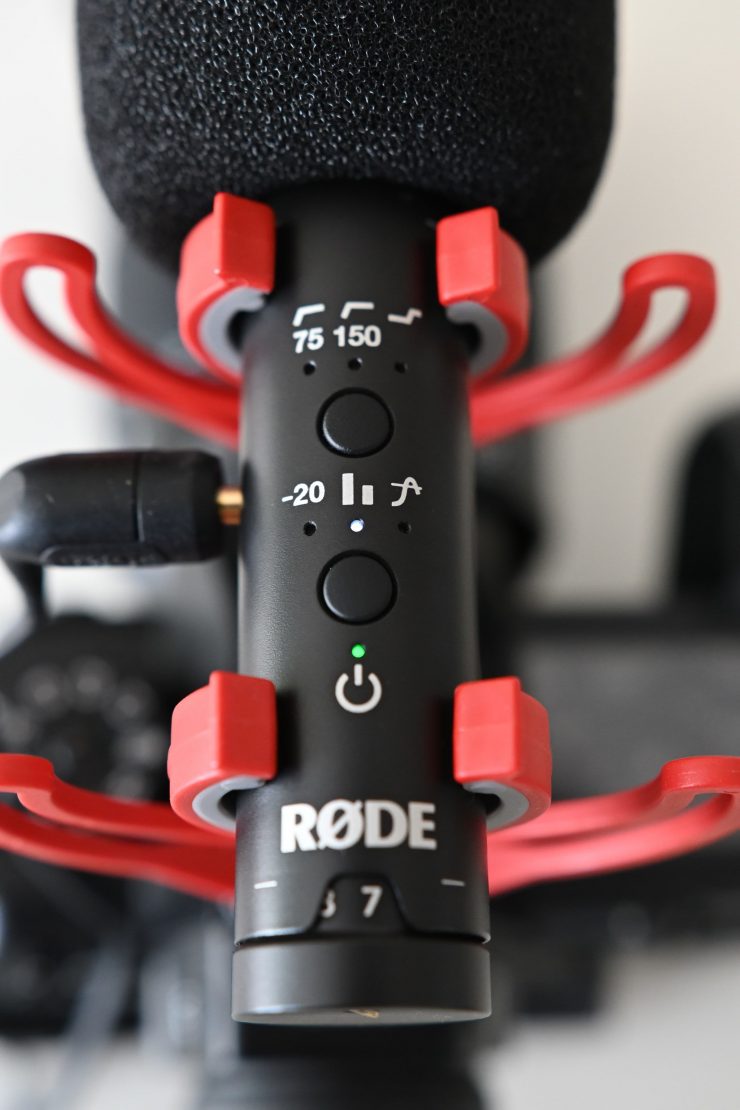
This is probably one of the microphone’s best features. The ability to record a second track at -20db is a big deal, especially when you are using a microphone like this on a camera.
In loud environments or newsgathering where sudden noises can occur, this can make the difference between having usable audio instead of audio that is distorted and clipped.
Other Features
The VideoMic NTG has a high-pass filter (75Hz or 150Hz), – 20dB pad, high-frequency boost, and safety channel. As I just mentioned, for added security, the switchable safety channel records a separate channel at -20dB in case the main channel clips.
The microphone is also firmware updatable.
Battery
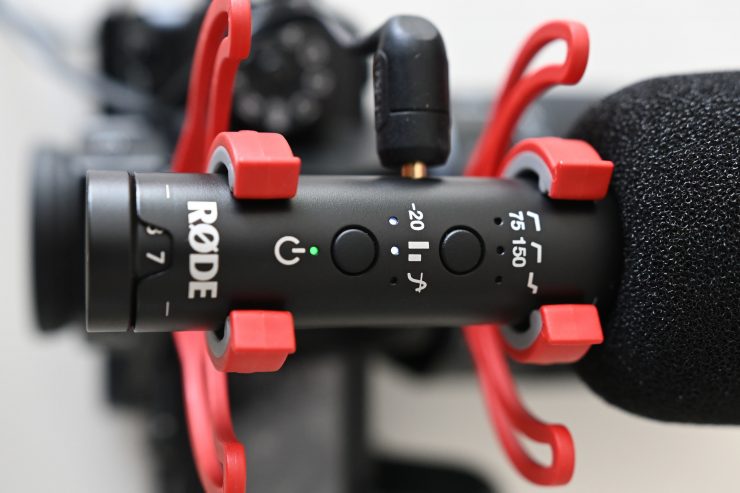
There is a dB peak warning light and an In-built rechargeable lithium-ion battery that is claimed to provide up 30+ hours of recording. I didn’t leave the mic on for 30 hours to test this, but it easily lasts more than a day.
You can charge the microphone in under 2 hours according to RØDE. From my testing I found that figure to be pretty accurate.
What I like about how the mic is powered is that it automatically turn on for you once it detects the device it is attached to is also powered on. You don’t have to put the mic into a standby mode.
RF Interference
Some Rode microphones have had pretty bad shielding and can be susceptible to RF interference. Here in Tokyo, I have had instances where the microphone I was using was picking up radio stations and I had to switch to something else.
I was interested to see if the VideoMic NTG had any similar problems. From the testing I did, I didn’t encounter any RF interference.
Rycote Lyre shock mounting system
Just like most RØDE microphones, the VideoMic NTG uses the Rycote Lyre shock mounting system with cable management, plus a sliding rail mount to adjust mic placement on the camera’s cold shoe.
The sliding rail mount is great because if you are using the microphone on a smaller camera and you have it attached to the cold shoe connector, you can get it out of the way of the eyepiece when you are shooting.
Conversely, if you are using a very wide-angle lens you can slide the microphone back so it won’t be in shot.
I also like that there are grooves on the mount so you can tuck your cables in. This may be a small thing, but it keeps your set up nice and tidy.
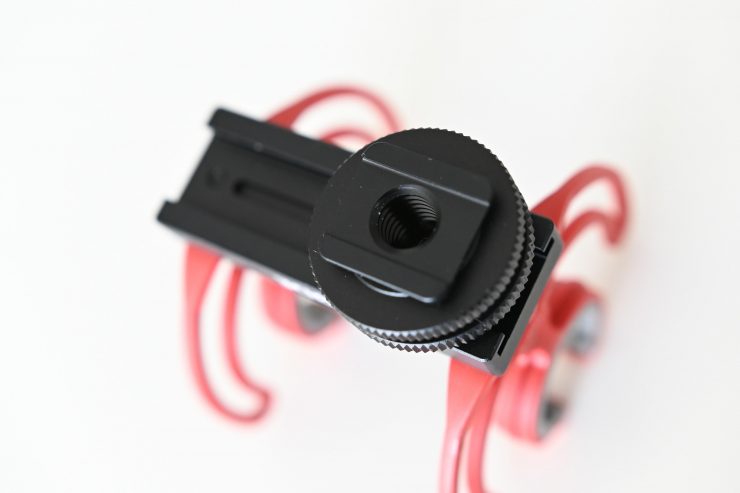
Another great feature is that on the bottom of the cold shoe mount there is a 3/8″ receptor so you can screw it directly onto a boom pole.
Real-World Performance
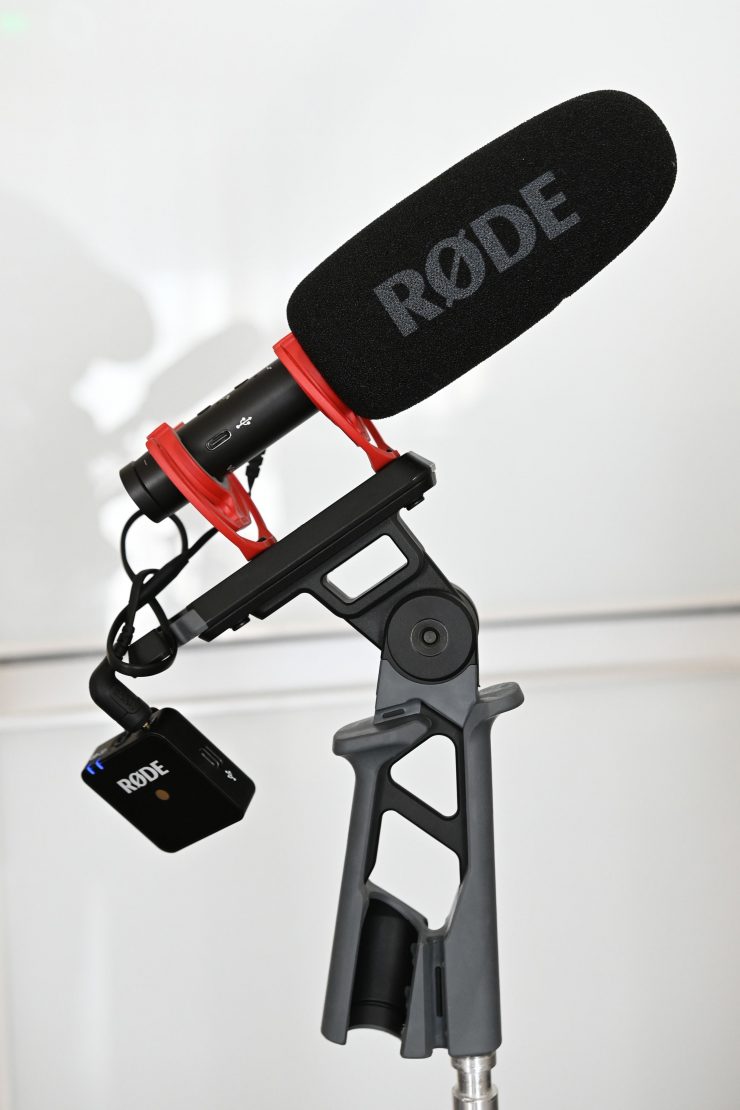
I’m not an audio guy, but to my ear, the VideoMic NTG sounds a lot more directional than previous VideoMic models. That probably shouldn’t come as that much of a surprise given the mic has a highly directional super-cardioid polar pattern.
In the above test that you can listen to I have compared the VideoMic NTG directly against the NTG5. Why? So that you can get an idea of how it compares against a very good shotgun microphone. For the test, I put both microphones directly into the BMPCC 6K. The VideoMic NTG went straight into the 3.5mm input and the NTG5 went into the mini XLR adaptor.
Both microphones were tested in the exact same place at the exact same distance. The only thing I have changed was the input level on the camera. I had to set the level slightly higher when using the VideoMic NTG to match the level of the NTG5.
I liked how the microphone sounded and it seemed to have a pretty low noise floor. What surprised me was that the VideoMic NTG didn’t sound that much different to the NTG5. In saying that, this test was relying on the in-built preamps of the BMPCC6K. I have had extensive experience using the NTG5 and I know it is capable of sounding a lot better than what I heard in the test when it is hooked up to a camera with good pre-amps or a mixer etc. At the end of the test, you can hear the NTG5 being used through a JuicedLink Riggy Micro.
I loved being able to plug the microphone straight into my computer or smartphone and record good quality audio. Above you can listen to audio recorded directly from the microphone straight into an iMac using FCPX. I haven’t touched any settings or adjusted the audio in any way.
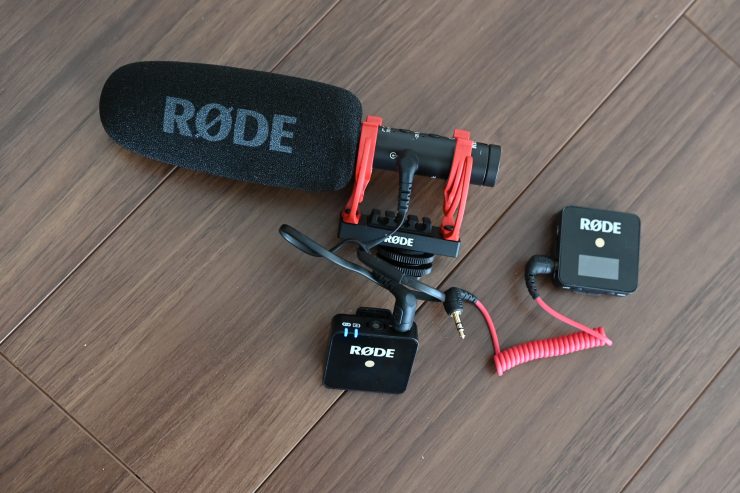
One of the other nice options is to couple this mic together with the RØDE GO system if you want a low cost wireless booming solution.
I was surprised at just how good the microphone worked on a boom for sit down interviews. But, to do this I didn’t run a cable, I used the RØDE GO. Why? Well, the microphone has an unbalanced output and not a balanced output. While it probably doesn’t sound as good as an NTG5, for a lot of people it will be good enough.
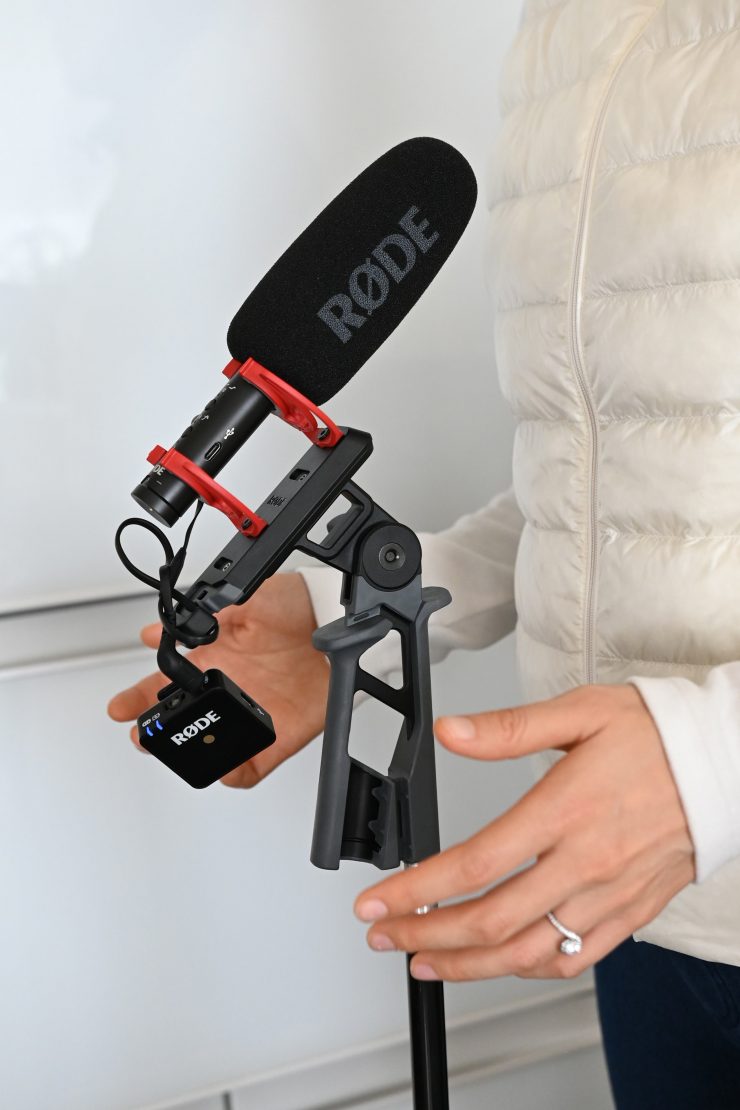
You can also place the microphone on a mini light stand if you use a different support mount.
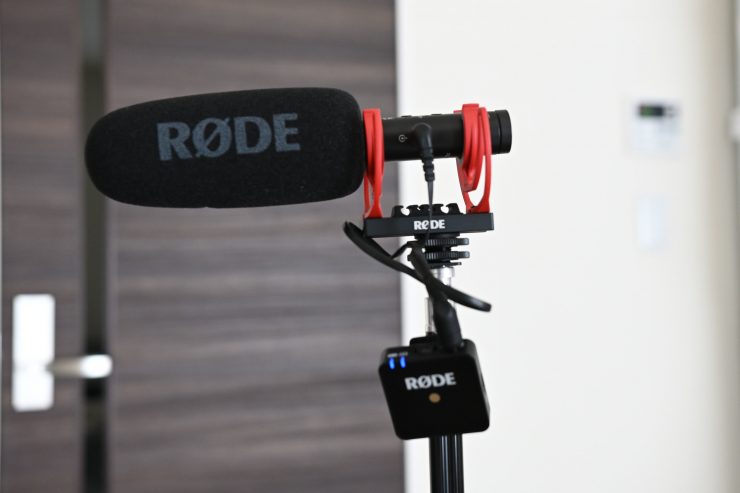
Why a different support mount? Well, if you use the included microphone support you get from Rode, there is no way of adjusting the angle of the microphone.
I like being able to use my microphones for different applications. If you are a one-man-band you can take the same microphone you are using on camera and then place it on a stand and plug in a RØDE GO Wireless TX. This makes for a very cost-effective solution. In saying that, I personally think the microphone sounds a lot better when it is being used from above rather than having it face up.
As I have already mentioned, it is the versatility of the microphone that is undoubtedly its biggest selling point. Being able to use it for so many applications makes it a very useful audio product to have in your kit.
Full Specifications
- Acoustic Principle: Pressure gradient electret condenser
- Polar Pattern: Supercardioid
- Frequency Range: 20Hz – 20kHz
- Frequency Response: 35Hz – 18kHz ±3 dB
- Output Impedance: 10Ω
- Signal to Noise Ratio: 79 dBA
- Dynamic Range: 105dB SPL
- (A-weighted, as per IEC651)
- Equivalent Noise: 15dB SPL
- (A-weighted, as per IEC651)
- Sensitivity: -26 dB re 1V/Pa (50mV @ 94dB SPL) ± 1dB @ 1kHz
- Input SPL at 1% THD: 120dB SPL
- High Pass Filter 75Hz, 150Hz Frequency:
- Battery Life: 30+ hours
- Battery Capacity: 350mAh
- Output Connection: 3.5mm auto-sensing USB-C
- Bit Depth: 24-bit
- Sample Rate: 48kHz
- OS Requirements: Mac OS 10.12 Windows 10
- Weight (grams): 94g
- Dimensions Diameter: 21.6 (millimetres): Length: 171mm
What’s Missing?
Despite the RØDE VideoMic NTG having a host of features, it is missing a few things:
- The battery isn’t user-replaceable, which may shorten the lifespan of the product.
- No battery indicator on the mic. I like products where I can clearly see how much battery life I have left. As the mic utilizes a built-in battery that you can’t change, it would have made sense to incorporate some sort of battery indicator. Even something as simple as a few colored LED bars. Yes, the battery does have a long run time (around 30 hours), but it is sure to be one of those products people forget to charge. I personally find that I tend to charge products more often that have shorter run times because you know you need to.
- There is no balanced output. Maybe I’m being a little picky here, but it would have been nice if the microphone had one. As the output via the 3.5mm jack is unbalanced if you want to do longer cable runs you may end up getting interference.
- No Dead cat-yet. Outdoors in windy conditions, the included wind jammer just won’t suffice. If you are going to use the VideoMic NTG as an on-camera microphone you really do need a better wind jamming solution. RØDE will be bringing a Dead cat out for this microphone.
- No XLR output. If you want to use the microphone with a professional camera or audio mixer you would have to use an adapter. It would have been nice to see RØDE include a cable with an XLR plug.
Competition
Direct competition comes in the form of the DEITY D3 Pro. The DEITY D3 Pro was introduced about a year before Rode bought out its VideoMic NTG. The VideoMic NTG is bound to draw comments that a lot of the features look to be exactly the same as on the D3 Pro. That is certainly valid criticism.
The D3 Pro microphone features a microprocessor that reads the plug/connector on your camera, tablet, laptop, bodypack transmitter or cellphone and automatically adapts itself to meet the device’s needs. That means you no longer have to carry around a lot of different adapter cables with your microphone. This makes it easier to use with whatever device you happen to own.
Deity also has a different take on adding +20dB of gain. Unlike some other microphones that use a simple 1 or 2 position toggle switch, the V-Mic D3 Pro uses an adjustable knob so you can dial in exactly how much gain you need. In some ways, it’s almost like having an audio mixer built into the microphone.
The D3 Pro is USB rechargeable and offers a claimed run time of greater than 50 hours. The microphone will go into standby mode when you are changing batteries in your DSLR and the D3 Pro will turn itself off after 15 minutes in standby. This is a really nice feature because it means the batteries won’t go flat in your microphone if you forgot to turn it off. So many of today’s on-camera microphones, especially for DSLR and mirrorless cameras don’t feature this function. The regular D3 can be in standby mode for a whopping 6000 hours (250 days!).
Inside each microphone is a 14mm pre-polarized capsule that offers a flat natural frequency response. Unlike other microphones on the market that have a pronounced bass boost that ends up mudding the sound, Deity claims that the D3 Pro offers the user a very realistic representation of sounds as they originally occurred.
Deity Microphones partnered with Rycote to co-engineer the included cold-shoe shock mount. These shock mounts feature real Rycote Lyre suspensions, the exact same ones used on boom poles, so your microphones won’t pick up handling noise that may come from your camera. It also means the D3 Pro can come out of their shock mount and be used with other shock mounts if needed.
The main advantage the D3 Pro has over the VideoMic NTG is that it has a balanced output which makes it a better option if you want to use it as a wired connection on a boom.
Just to be clear with our readers, I have never used the Deity D3 Pro, so I can’t say how it compares against the VideoMic NTG when it comes to sound quality.
The RØDE VideoMic NTG has the ability to be used as a USB microphone, and you can record a second track at -20db, this is something the Deity D3 Pro can’t do.
What you also need to consider is that the RØDE VideoMic NTG is more expensive than the Deity D3 Pro. The D3 Pro is $199 USD while the VideoMic NTG is $249 USD.
Conclusion
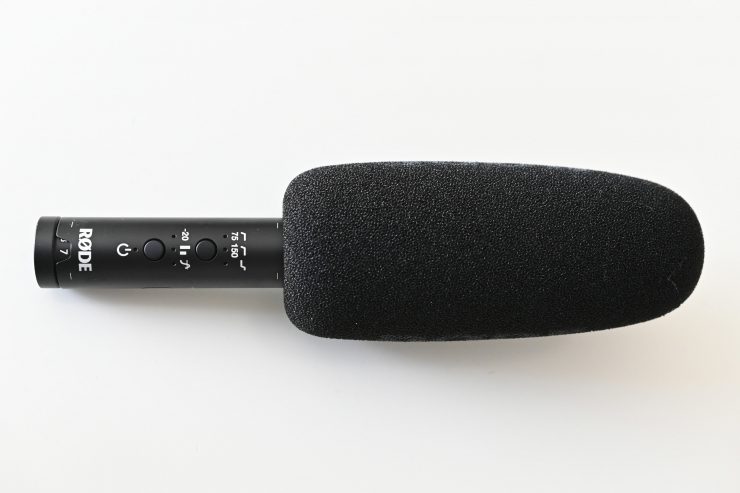
The RØDE VideoMic NTG is a good microphone that can be used for a lot of different applications. The build quality and general attention to detail are, at least in my opinion, far better than previous on-camera offerings from RØDE.
The microphone sounds good and it is nice that you can use it as a USB microphone as well as plug it directly into a smart device. The ability to record a second track at a lower level than your main track is also something that shouldn’t be overlooked.
In some ways, it is a pity that RØDE hasn’t given the microphone a balanced output and allowed you to use an XLR adaptor so you could also plug it into professional devices. I suspect the reason behind this is to protect the more expensive NTG series of microphones.
If you are looking for a good on-camera microphone that has the versatility to also be used as a boom microphone and a USB microphone, I highly recommend it.
While it isn’t perfect and some things could be improved upon, it is probably pretty hard to argue that this isn’t the best currently available on-camera microphone that is under $250 USD.

